
rgb strobe by Tsutomu Mutoh from japan
designer's own words:
The installation explores a frontier of visual communication design with an idea of "motion by colors". Your physical motion turns into continuous colored images captured in high speed flash color lights, then you are able to identify the body and its motion and to design them visually in the space (see fig.1-4).
Latest digital technology extends objects of color by perception from static existence to dynamic phenomena. The issues of color in design, as a result, shall not be limited in terms of physical surface but of matter with motion.
Materials such as paints or inks have long been the media for paintings or printings to express colors. Small grains of pigment or halftone dots invisibly distributed in space are the elements of and perceived as object colors by the illusion effects in a scale beyond the limitation of the space resolution of human's sight. The density of those color elements matters, which is why the texture is an important issue on color expression of static objects.
On the other hand, the colored lights from monitor display or full color LED emerge as a new digital media for express colors. Red, green and blue lights and their mixture invisibly high speed flash in time are the elements of and perceived as color phenomena by the illusion effects in scale beyond the limit of time resolution of human's sight. The dynamic motion, such as cartoon animation, of those color elements matters and is an important issue on color expression of dynamic phenomena.
This expansion of media will increase the needs for dynamic and spatial color design controlled by digital technique in various fields including visual communication. In addition to the basic knowledge and technique of visual form consisting of shapes and colors, "motion" should be considered and design methods for dynamic phenomena on new media for colors should be explored more.
Design method for dynamics of colors shall be different from those for static painting of colors such as red, blue or yellow on objects. The computer is an useful design tool for experiments on motion of colors, on which we must manipulate colors in digital form and by calculation. Engineering technique takes a major role at this stage of exploration but the current knowledges on color algorithm such as HSB or HSL are not enough to solve problems on human perception of dynamic colors including hue changes maintaining complementary characteristics or keeping consistency with brightness, which are all critical for color lighting design on today's media. I have developed a dynamic color control algorithm incorporated those design and art consideration (see fig.5) and implemented in several installation works and experimental products. I have focused on brightness which is thought be the most subtle element for human color perception and designed an unique control algorithm to change hue and grayscale independently to the brightness, which allows us to design rhythmical and wide range combination of colors in motion. The experiment is unique in terms of designing a function of computer to explore new methods, not using computer as a design tool.
The installation work is based on the original method described above and being applied to a visual communication design in which motion of colors are related to physical action of audience. The system consists of a large screen with a video projector behind and a full color strobe at the top, a camera in front and a black back drop behind of audience (see fig.6). A single-lens reflex digital camera to capture the audience's physical motion and the synchronized strobe system are controlled by a computer. The digital color by light emission from the full color LED system in higher frequency than perceived are adjusted in time scale to turn into flash light of the strobe to capture the motion. Audience will just walk in, stand in front of the screen and enjoy their images as if they stand in front of the special mirror without any operation. The system is intended to invite their physical motion of their own and communication of each other. They learn from visualization of their motion to design new action to enjoy images.
They will identify their action being unaware everyday, recognize the phenomenal function of colors in the dynamic environment and discover their physical and perceptional "motion" that has emerged from "motion" of expression by recent media technologies.
RGB strobe motion photo (fig.1) 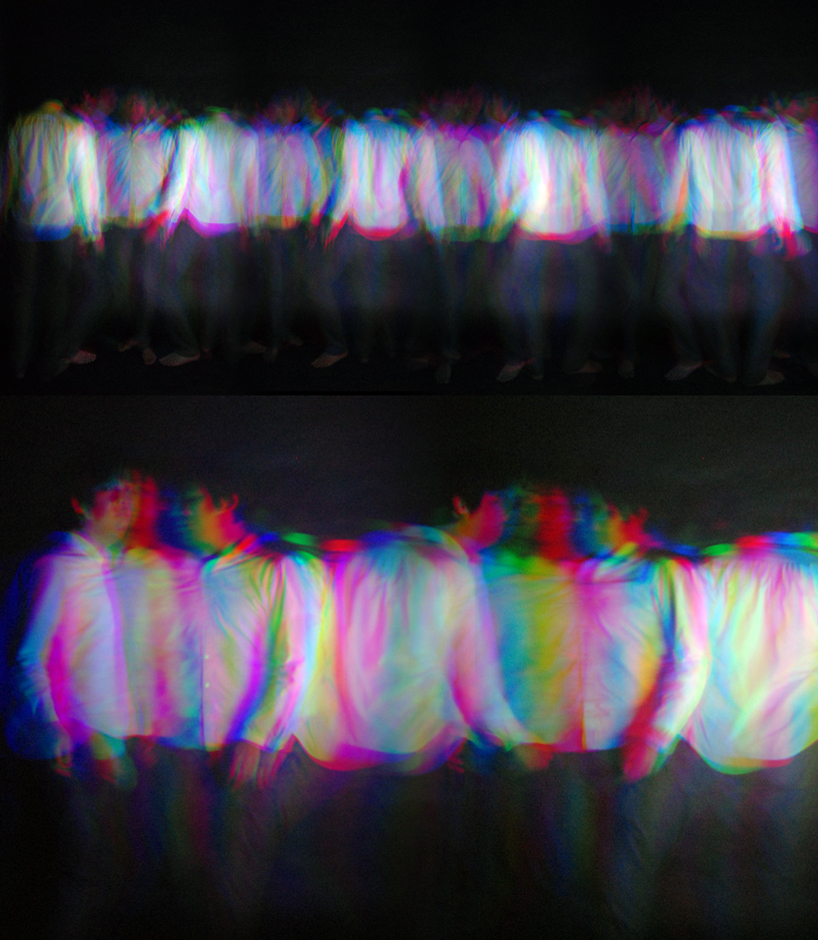 RGB strobe motion photo (fig.2) [jwplayer config=”mplayer” width=”818px” file=”https://static.designboom.com/wp-content/compsub/368212/2012-12-29/video_1_1356795810_3780638878079b1527d36f886b3dced0.mp4″] video
RGB strobe motion photo (fig.2) [jwplayer config=”mplayer” width=”818px” file=”https://static.designboom.com/wp-content/compsub/368212/2012-12-29/video_1_1356795810_3780638878079b1527d36f886b3dced0.mp4″] video
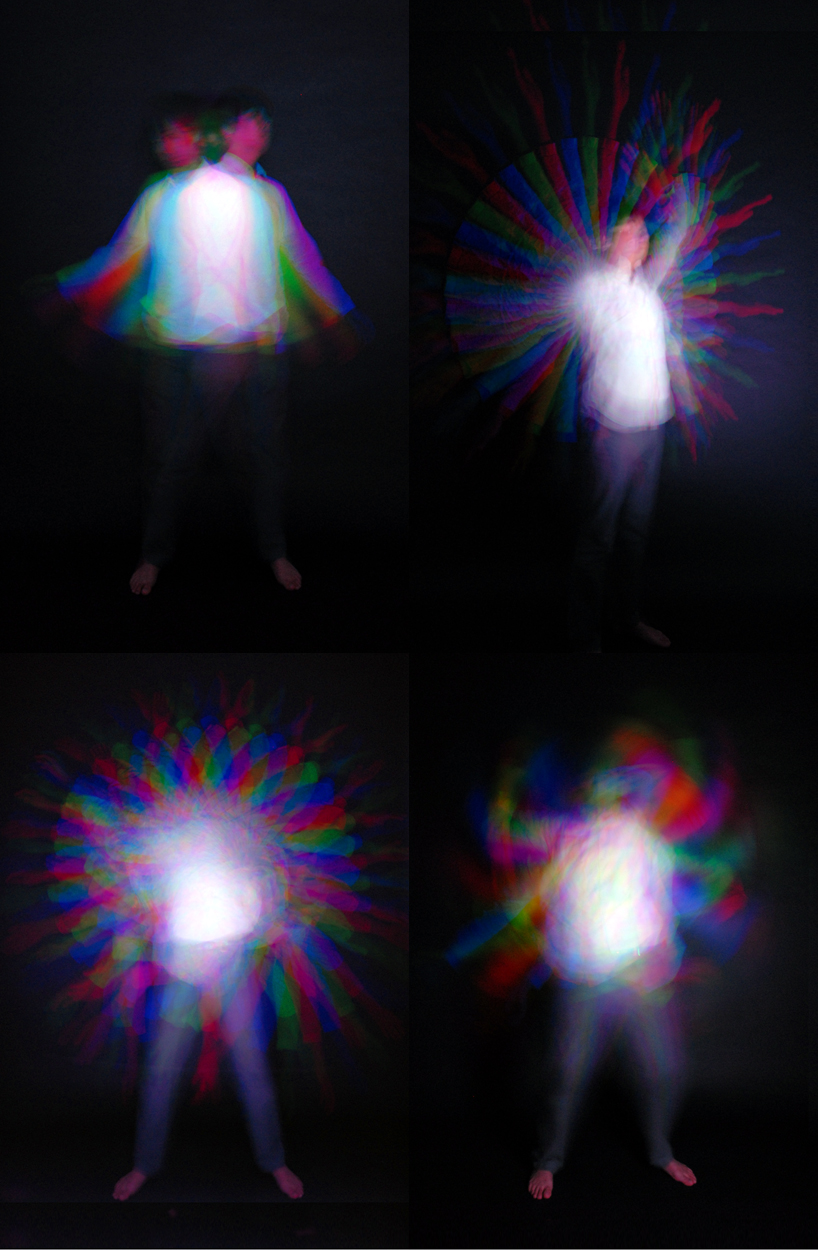 RGB strobe motion photo (fig.3)
RGB strobe motion photo (fig.3) 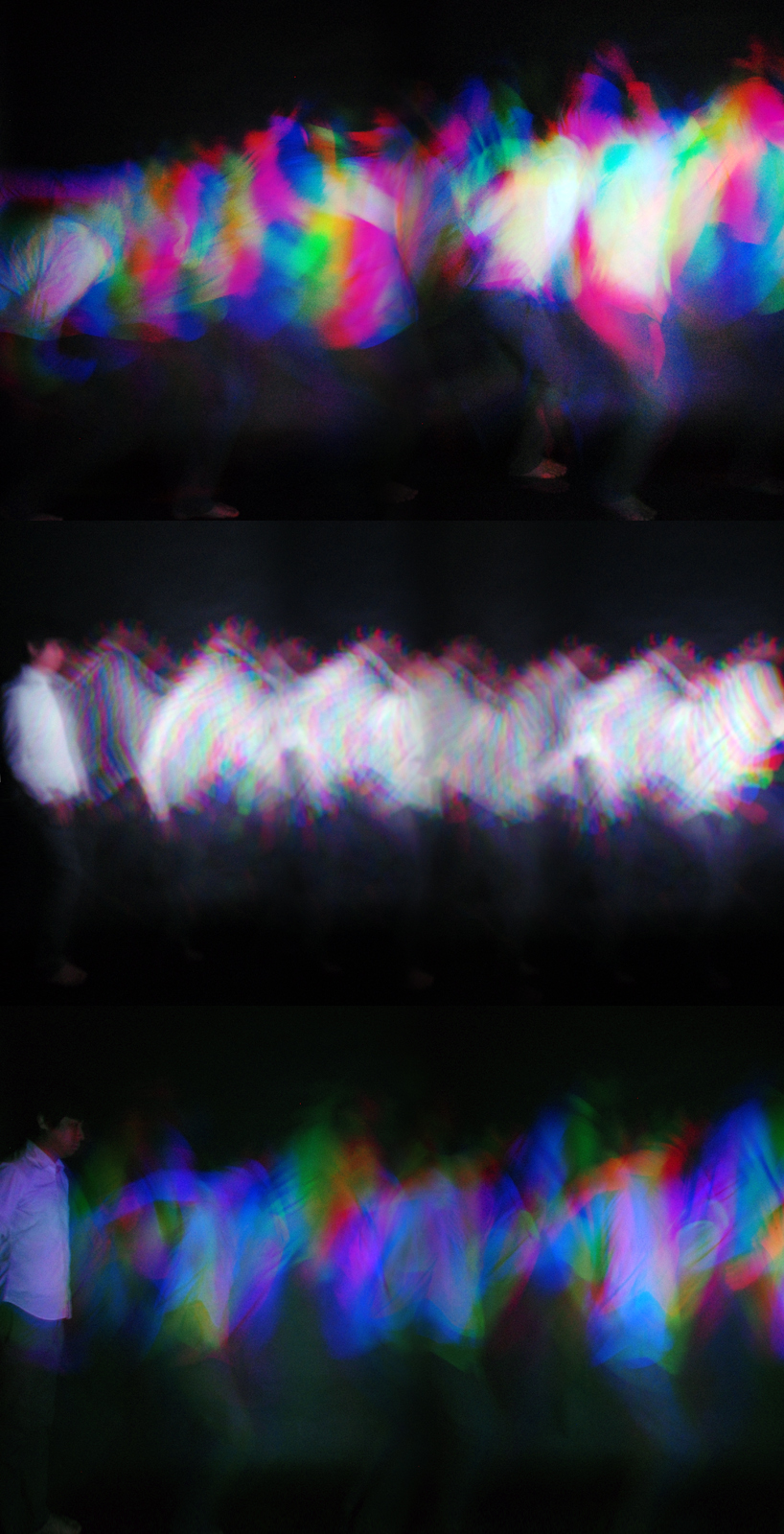 RGB strobe motion photo (fig.4)
RGB strobe motion photo (fig.4) 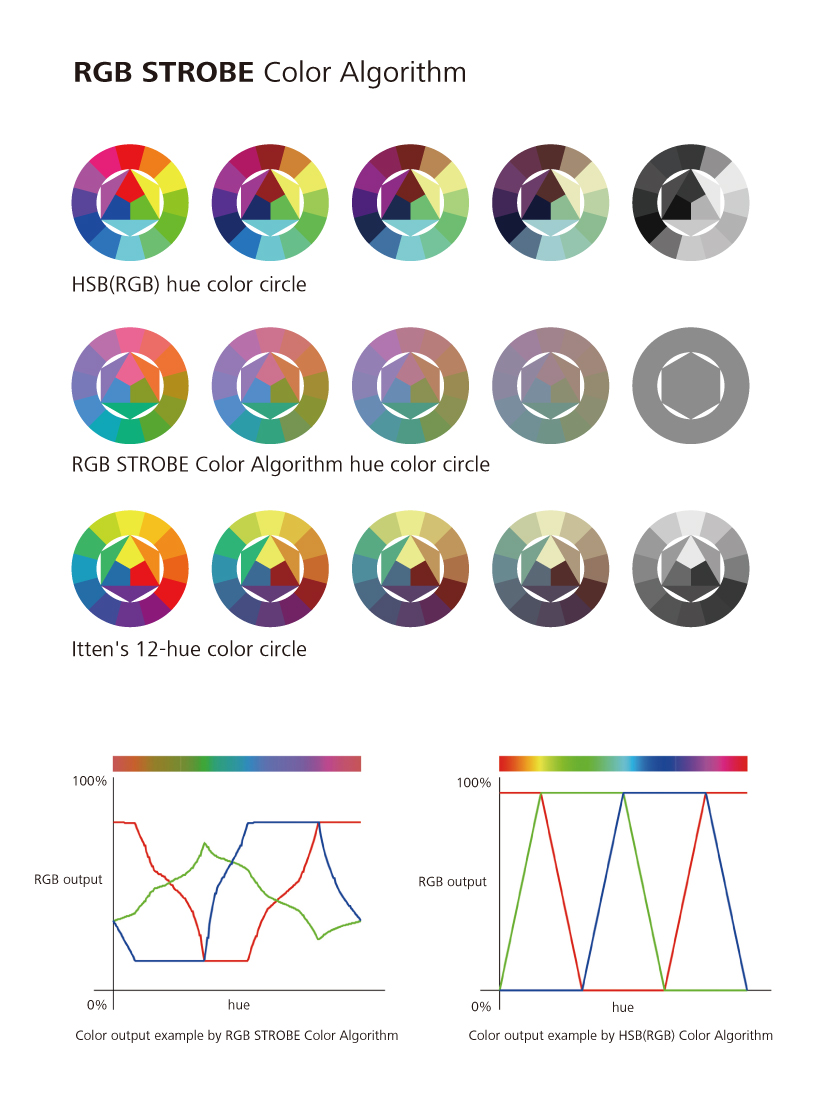 Color algorithm (fig.5)
Color algorithm (fig.5) 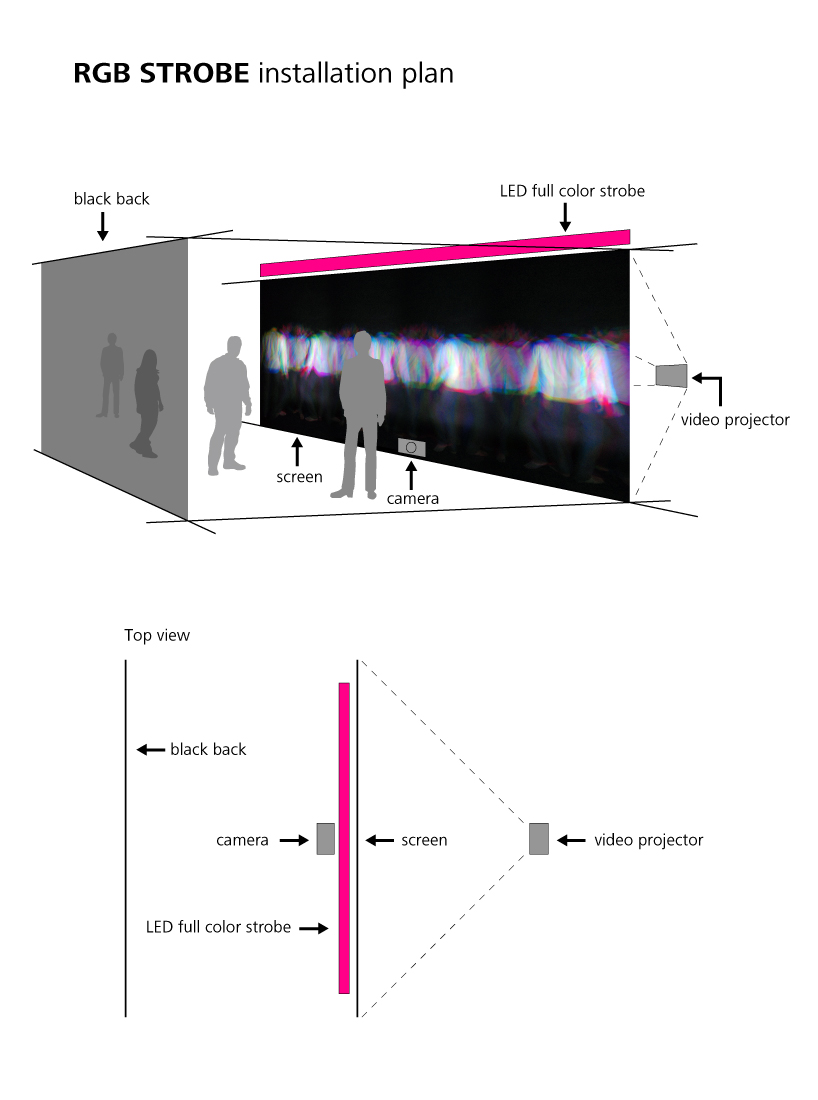 Installation plan (fig.6)
Installation plan (fig.6)